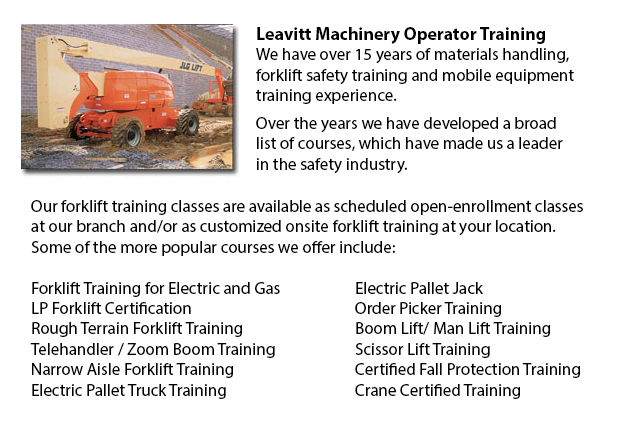
Brampton Aerial Lift Certification - Aerial Lift Certification is for individuals who need an in-depth understanding of aerial lift safety. Inspectors and operators, construction craftsmen, supervisors and maintenance workers have to perform a training and certificate program. Provincial, state and federal regulations need businesses to be certified to be able to do in-house aerial lift checks.
Nearly all workers who are required to perform tasks at elevated level would normally use the same means to get to these desired heights, regardless of the type of work which should be performed. Aerial lifts and scissor lifts are the mechanized devices made use of in order to lift workers and equipment to elevated worksites.
Bucket trucks referred to as Cherry Pickers are aerial platforms which feature a supported boom and bucket. The primary danger to utilizing this kind of platform is normally falls, electrocutions, and tip overs. Certification ensures that workers who utilize aerial lifts are correctly trained to work the equipment safely. Training also makes sure that workers know how to maintain aerial work platforms based on the manufacturer's directions.
Training covers the following lifts: Vehicle-mounted aerial lifts, Boom-supported scissor lifts and aerial lifts. Trainees would gain knowledge of the results and causes of aerial lift accidents, and would learn safe operating procedures. They will be technically competent in the different types of aerial lifts, in addition to terminology and components. From interpreting rated capacity charts to choosing the best aerial lift for the job, the certification program will provide employees with all that they should know in order to do their work safely.
Supervisors and inspectors who have the responsibility to check aerial lift devices should know how to check booms, gears, operating mechanisms, structural parts, functions and control systems, braking systems, power plants, attachments, shafts and pins, electric and pneumatic parts, hydraulic, operator aids and emergency safety devices, and so on. Training would comprise the following: the role of the inspector in reducing accidents and liability exposure; how to perform a pre-use, monthly and annual inspection; how to apply and interpret rules regarding aerial lift safety standards; how to write inspection reports; checklists and techniques; inspection procedures; complying with record keeping requirements; understanding and applying the three levels of aerial lift inspection; and when to remove aerial lifts from service when they are defective.
-
Brampton Aerial Boom Lift Ticket
Brampton Aerial Boom Lift Ticket - Aerial lift trucks might be used to accomplish several different tasks executed in hard to reach aerial places. Many of the tasks associated with this style of jack include performing routine maintenance on building... More -
Brampton Aerial Lift Train the Trainer
Brampton Aerial Lift Train the Trainer - The Aerial Lifts Train the Trainer Certification Program would teach trainers how to efficiently train operators in safe industrial mobile equipment operation. Trainers are provided with in-depth instruction o... More -
Brampton Zoom Boom Training
Brampton Zoom Boom Training - Zoom Boom Training is intended to train operators on variable reach forklifts. The goals of the training are to be able to impart an understanding of the physics of the machinery, and to be able to outline the operator's... More -
Brampton Heavy Equipment Operator Training
Brampton Heavy Equipment Operator Training - Heavy equipment operator training facilities that provide good standards within the industry, providing field performance work and additional machinery training are really sought after training features. S... More -
Narrow Aisle Forklift / Order Picker Training / Electric Pallet Jack / Electric Pallet Truck Training in Brampton
A pallet haul is equipment built in particular for moving pallets of irregular weights and dimensions. They may be used in conjunction with cranes, forklifts and other heavy duty equipment as an appendage piece or to be employed on their own. Pallet... More -
Brampton Overhead Crane Safety Training
Brampton Overhead Crane Safety Training - Overhead crane safety training equips operators with knowledge and skills regarding crane safety measures, accident avoidance, materials handling, and equipment and stock protection. Trainees will learn the k... More -
Brampton Crane Safety Training
Brampton Crane Safety Training - Companies and crane drivers have to know the problems associated to crane safety. Legislation provides rules for the safe maintenance, operation and inspection of lifting machines across North America. Crane Safety co... More -
Brampton Telehandler Training
Brampton Telehandler Training - Telescopic handlers normally known as telehandlers for short, are a really popular piece of heavy construction machinery. They are usually utilized in the construction and agricultural trades. These machines have farth... More

Forklift Certification Brampton
TOLL FREE: 1-888-254-6157
Brampton, Ontario
forkliftcertificationbrampton.com
Email Us
About Us


